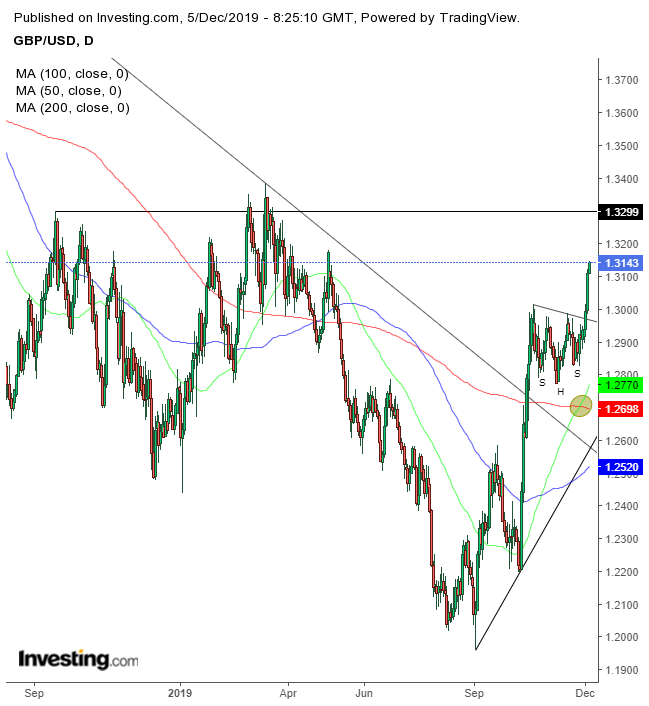United Homes Group stock plunges after Nikki Haley, directors resign
The pound is aiming higher as confidence rises that Prime Minister Boris Johnson's Conservative Party will win the UK's election next week. Indeed, sterling has reached the highest since May 5 against the dollar, with traders stepping up bets for a Conservative victory.

This makes the fifth straight gain since the first half of April 2018, when it climbed for seven days in a row. The rally broke through the 1.3000 resistance, below which it’s been pressured since Oct. 21.
The upward swing completed a H&S continuation pattern, as the month-and-a-half range ended. The currency now looks set to continue along its uptrend since the Sept. bottom.
The 50 DMA crossed above the 200 DMA, executing a golden cross, right before the upside breakout. This lends more credence to its sustainability, as a broad range of prices confirm the direction of the trend.
The MACD provided the same signal of returning higher and the RSI demonstrated that momentum kept its upward trajectory, after it bounced off the uptrend line and broke through the short-term downtrend line since mid-October.
The fact that the H&S continuation pattern occurred after it broke through the downtrend line and since scaling above the 200 DMA, thus triggering a golden cross, shows that the preponderance of the evidence is in favor of a continued rally.
The next major resistance since mid-April 2018, the top of a failed H&S bottom between August 2018 and May 2019. That failure cost the pound more than 10% and it’s now coming to collect.
Trading Strategies
Conservative traders should wait for new highs, past the Mar. 13, 1.3385 high, to assure that all supply is spent, before relying on a continued uptrend.
Moderate traders may enter a long position if the price displays accumulation above the H&S’s neckline.
Aggressive traders might risk a contrarian short position on signs of resistance, counting on the 1.3000 resistance and the natural market mechanics resulting in a return move.
Trade Sample
Note: A sample demonstrates the components of a trade plan. Trading success is measured by overall trading, not based on a single trade. Also, both the risk and the reward could be amended based on risk aversion.
